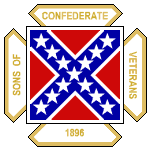I went by and took a look, and if you know the track was there you can see the banking in places. Unfortunately for me it's now a small gated community of houses, and decent photography is difficult. There are some things that can be determined though, one being that the track and bankings were built up from the original surface rather than being dug in or half and half. The whole area is rather flat, and in the oldest photographs you can see that the entire area along the river there was farmland.
I've included the 1938 Aerial shot as a point of reference.

The first shot is taken from point A. You can see small bits of the old banking , but most of it is gone. The area
in this photo is outside of the track, but the house behind the large canopy just left of center is built on top of the banking.

The second shot is from point B. It doesn't show the reason why I couldn't get in, but the photo was taken through a large and locked gate. The entire banking in that immediate area is gone, although again a house to the left is up on top of a portion of the remaining banking which is visible just beginning to rise.

The third and fourth shots are from point C. First is from the straight street just below the track on the southeast side, right at the point where the track was closest to the street.

A slick climb up the hill gave me this foreshortened view down the banking. Growth and areas where the banking had been destroyed over time make getting any sort of meaningful photograph difficult (especially for me, being a total dork with a camera), but you CAN see it.

From what I can see, the banking was no more than about 8 feet in height. Assuming that they were accurate in reporting a track width of 40 feet, that would make for approximately a 12 degree banking. Certainly it wasn't 35.
I wonder if any of these people have any idea what was under their houses.
























